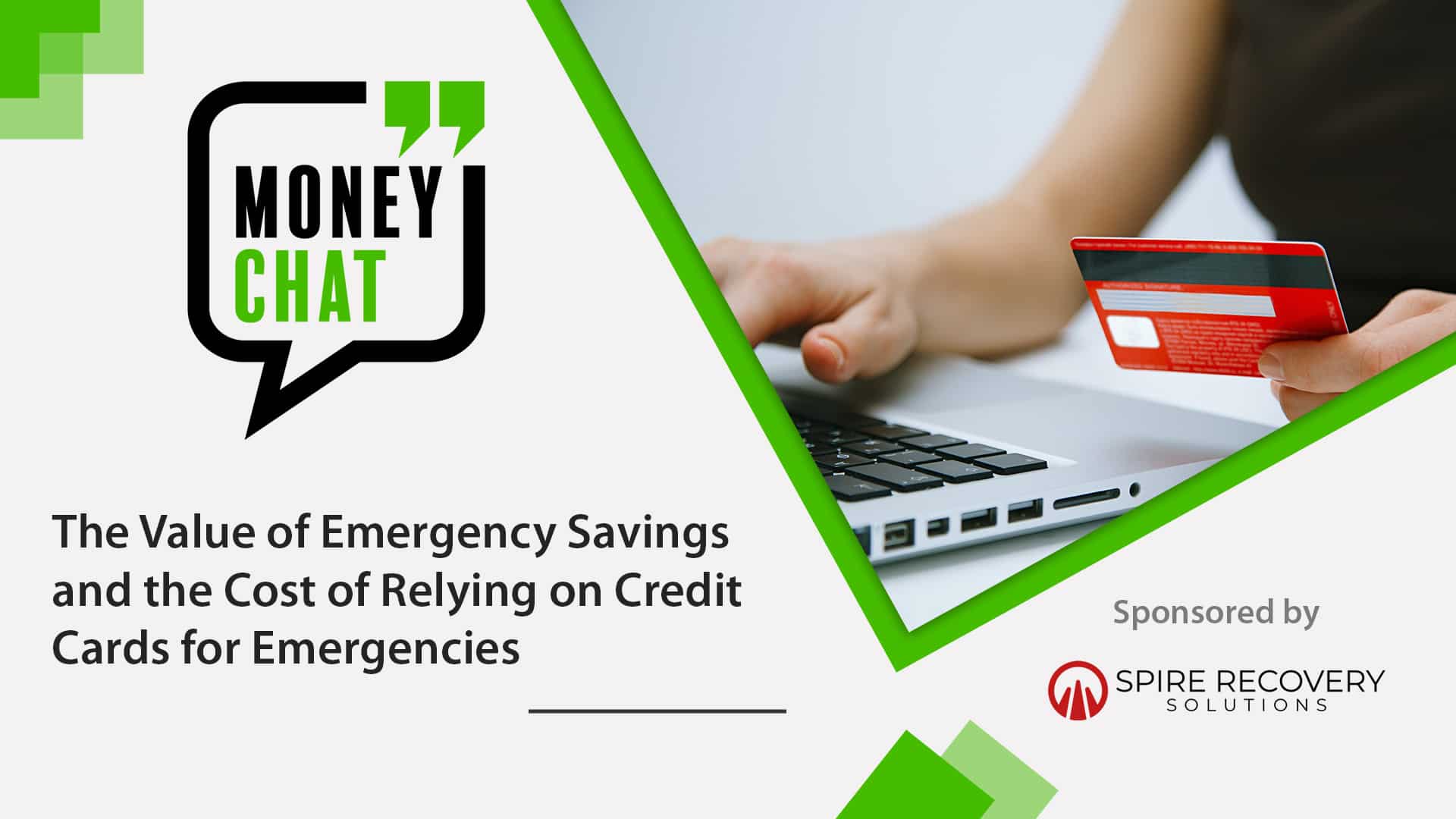
Explaining The Difference Between Installment Credit and Revolving Credit
Money is lent in different ways and for different purposes. When applying for a loan, the two most popular types of repayment are an installment loan or a revolving line of credit. These two types of borrowing offer very different pros and cons and are generally used for different purposes.
Our goal in this Money Chat is to help you understand what these types of loans are, how they work, and how they can impact your credit score.
What is an installment loan?
An installment loan is the borrowing of a fixed amount that is scheduled to be repaid over a specific time period in pre-determined installment payments. In order to borrow additional money (that exceeds the original amount), a new credit application is required.
As an example, if you want to borrow money to purchase a car, the auto loan would be for a specific amount of money and repaid over a specific number of payments. At the time of application, the amortization, or repayment schedule, of a $35,000 loan (plus interest) may be established for a 60 month/5 year term. With a fixed interest rate, each monthly payment is the same amount of money and reduces the overall amount of the loan (principal and interest) as each payment is made. With timely payments over the course of the loan, the loan is repaid and no new credit is extended at any point during the loan term.
When Should I Use an Installment Loan?
Installment credit with a fixed interest rate is often used for large purchases like cars, student loans, and mortgages. These types of loans have different advantages and disadvantages.
Advantage 1: Predictable Payment Schedule
When borrowing on an installment basis, the prepayment schedule is clearly defined. Usually an amortization schedule is provided when taking the loan. This gives you the specific date and amounts of all payments, including the anticipated date that the loan will be repaid in full. Installment loans can usually be structured over longer periods of time to make the required monthly payments smaller.
Advantage 2: Lower Interest Rates Available
Interest rates on installment loans are often lower than revolving lines of credit. For qualified borrowers, student loans and mortgages may be in the 4-6% range while auto loans may be offered at 1-2%. Rates on revolving credit for the same borrower are often much higher.
Disadvantage 1: More Difficult to Borrow
Installment loan lenders may have stricter requirements for borrowers. Fewer borrowers will qualify for low interest installment loans.
Disadvantage 2: Prepayment Penalties
Prepayment penalties are common with installment loans. When the interest rates are lower, lenders often require that the interest be paid in full as originally agreed, even if you pay the loan off early.
What is revolving credit?
A revolving credit account provides a line of credit with a credit limit which can be borrowed against and repaid over a variable amount of time. Minimum payments on the account are often required and the amount of the minimum payment is recalculated each month. It is determined by the amount of outstanding balance plus accumulated interest on the account.
As an example, when you open a credit card, you are given a limit within which you can borrow money. Spending money using the credit card will reduce the amount of available credit. Available credit is calculated by subtracting the amount of purchases and the interest applied for those purchases from the total credit limit on the account. When you make a payment on the account, it frees available credit that can then be spent again.
When should I use revolving credit?
Revolving credit lines are best used by consumers for emergency purchases. Car repairs and other unexpected expenses can be handled quickly with a credit card or line of credit.
Advantage 1: Flexibility
Credit cards and other revolving credit lines offer incredible flexibility. Almost every business accepts MasterCard, Visa, and American Express. With wide acceptance, credit cards can be used to purchase almost anything around the globe, online or in person. The convenience and flexibility of revolving credit is hard to match.
Disadvantage 1: High Interest Rates and Cost of Borrowing
Credit cards and revolving credit lines come with a high cost. Credit cards often charge variable interest rates in the 8% to 25% range with the outstanding balance compounding monthly. The high costs associated with revolving credit lines are the reason that consumers should only use them for emergency purchases.
Disadvantage 2: Falling into the “Debt Trap”
Credit cards and revolving credit accounts offer convenience and flexibility, but they can trick consumers when budgeting. Revolving credit cards may have a minimum payment, but repayment can be more difficult to accurately budget. Spending on credit cards can affect your credit utilization rate which is an important factor in the calculation of your credit score. A lower credit score will increase your cost to borrow money in the future, making things more expensive for you to purchase.
Why do I care about revolving and installment credit?
When borrowing money, your credit score is used by lenders to estimate the risk that you will not repay what you borrowed.
How does the Revolving Credit Utilization Ratio Affect my Credit Score?
Part of your credit score is an evaluation of your credit utilization ratio. This is a calculation (current balance / credit limit) that demonstrates how much of your available credit is still available. When 30% or more of your credit is being used ($300 borrowed on a $1,000 credit limit), then your score will start to be negatively affected because you represent a higher risk to creditors.
Does the length of time the installment account is open matter?
Another important part of your credit score is related to the length of time that your installment credit accounts have been open. Older accounts are generally more beneficial for your credit score since they demonstrate a stable history of on-time loan repayment.
How all of this affects me as a consumer
Generally, the type of loan will depend on the need or type of product for which you are borrowing money. However, having a clear understanding of the proposed repayment schedule, interest rates, any associated penalties, and loan terms is important to making healthy financial decisions and determining whether or not your budget can support the loan. If you have specific questions when applying for and obtaining credit, be sure to ask the potential creditor with whom you are applying.
Additional Resources
For more information about financial literacy and to access additional consumer financial resources, please visit the Receivables Info Resources Page.
Have an idea for a Money Chat topic?
We want to hear from you! If you have a suggestion for a future Money Chat topic, please email us at [email protected].
The information contained in this article is meant to serve as general guidance for consumers and not meant to serve as comprehensive financial advice. For questions about your individual circumstances, finances, or accounts, please contact your creditor(s) and/or financial advisor directly.
Thank You To Our Sponsor
This article was sponsored by Central Portfolio Control. Headquartered in Minnetonka, MN, Central Portfolio Control, or CPC, is a full-service and nationally licensed collection agency focused on the recovery of distressed accounts receivable. CPC manages accounts on behalf of our creditor clients while maintaining the highest ethical and legal standards regarding their collection activity. Since being founded in 1998, the CPC team has continued to grow the company by providing top-quality services to our clients and creating jobs within the local community.









